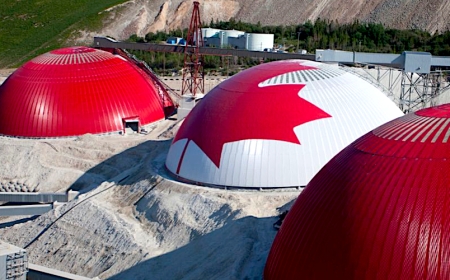Gold Fields deal gives Osisko option to fast-track high-grade gold at Windfall
The Windfall gold project in Quebec, boosted last week by a $600-million investment by Gold Fields (NYSE: GFI; JSE: GFI), may tweak plans to increase first-year production by a third, founding partner Osisko Mining (TSX: OSK) says.



The equal partnership would extend the undergound project’s ramp currently planned to run 630 metres deep to 800 metres instead, accessing ore grading about 9.1 grams gold per tonne rather than 8.1 grams, which could lift annual output to 400,000 oz. in contrast to 306,000 oz. in last year’s feasibility study, chairman and CEO John Burzynski said in a phone interview.
“It’s in the interest of both Gold Fields and ourselves to look at scheduling some of the higher-grade material earlier,” Burzynski said. “They won’t require any changes to the mill design, so it won’t interfere with permitting.”
Windfall, one of the highest-grade unbuilt projects in Canada, was advanced by the same team at Osisko who started production at Canadian Malarctic, now Canada’s largest gold-producing mine, run by Agnico Eagle Mines (TSX: AEM; NYSE: AEM). Burzynski and his team saw the potential in Windfall, which is in the Abitibi belt about 700 km northwest of Montreal, after previous owners had mis-interpreted the geology.
The Gold Fields investment gives the Johannesburg-based miner a long-sought entry to Canada, provides Windfall with more than enough cash for the estimated $789 million in construction costs and protects Osisko from a hostile takeover like it suffered with Canadian Malarctic.
“That would have been our cornerstone asset and like any emerging intermediate or senior company, that’s what we would have built a company around,” Burzynski said. “The deal with Gold Fields really has been the first day of our first step towards realizing this mine because we’re now fully funded. Permitting is in progress.”
Approvals should be in place within 18 months followed by a year of construction, the CEO said.
Before Gold Fields, Osisko was talking about a 50-50 Windfall split with Perth, Australia-based Northern Star Resources (ASX: NST), which operates two mines in Western Australia and a third in Alaska. However, both sides agreed not to pursue it, Burzynski said. Gold Fields, the eighth-largest miner by market value, is well-suited because of its experience across four continents and more than a century of underground operations, he said.
“For them, it was not just about Windfall because we also have about 2,400 sq. km of district scale property, an anchor in Quebec, and you know, there’s plenty of exploration to be done,” Burzynski said. “Windfall is the starter point for Gold Fields and ourselves in terms of having a mine come into production in about two and a half year’s time.”
Under the agreement, Gold Fields will pay for $75 million a year in regional exploration across the Windfall, Urban Barry and Quévillon gold belts. Bringing Windfall into production and exploring the area is expected to cost Gold Fields $1.2 billion, the companies said.
Shares in Gold Fields fell 8% on Friday in Johannesburg to close at 297.99 rand ($21.71) apiece, within a 52-week range of 126.62 rand and 319.17 rand, valuing the company at 262.5 billion rand ($19.1 billion). They were at 282.75 rand before the deal.
Osisko shares rose 1.6% each on Friday to close in Toronto at $3.87, within a 52-week range of $2.36 and $4.53, valuing the company at $1.46 billion. They were at $3.77 before the deal.




















